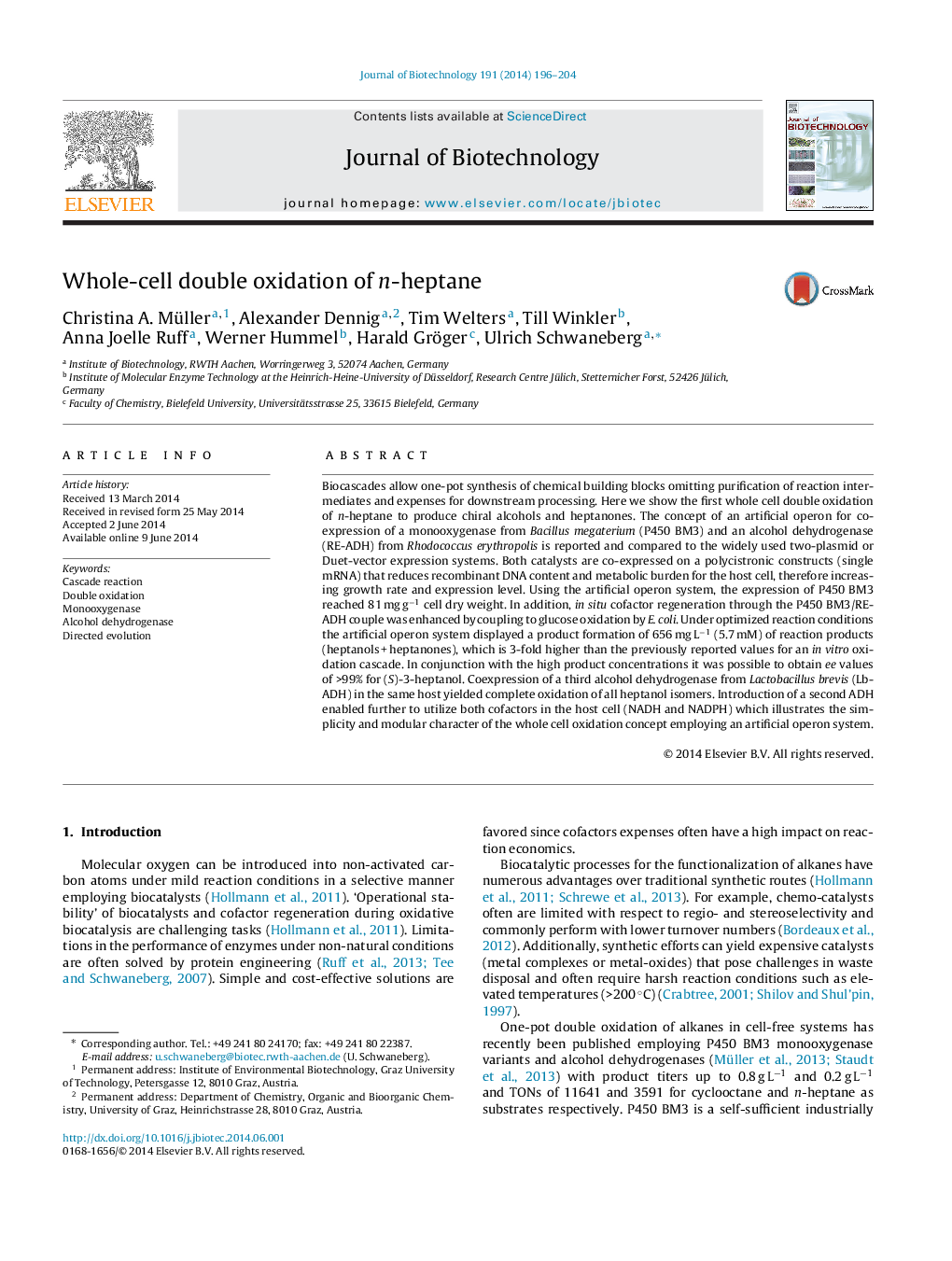| کد مقاله | کد نشریه | سال انتشار | مقاله انگلیسی | نسخه تمام متن |
|---|---|---|---|---|
| 23015 | 43409 | 2014 | 9 صفحه PDF | دانلود رایگان |
• Double oxidation of linear alkanes in a cascade reaction in water with oxygen as oxidant.
• Whole cell catalysts for double oxidation of n-heptane.
• Design of artificial operons for efficient expression of two enzymes.
• Coexpression of three oxidoreductases in E. coli.
• Double oxidation with coupled in vivo cofactor regeneration.
Biocascades allow one-pot synthesis of chemical building blocks omitting purification of reaction intermediates and expenses for downstream processing. Here we show the first whole cell double oxidation of n-heptane to produce chiral alcohols and heptanones. The concept of an artificial operon for co-expression of a monooxygenase from Bacillus megaterium (P450 BM3) and an alcohol dehydrogenase (RE-ADH) from Rhodococcus erythropolis is reported and compared to the widely used two-plasmid or Duet-vector expression systems. Both catalysts are co-expressed on a polycistronic constructs (single mRNA) that reduces recombinant DNA content and metabolic burden for the host cell, therefore increasing growth rate and expression level. Using the artificial operon system, the expression of P450 BM3 reached 81 mg g−1 cell dry weight. In addition, in situ cofactor regeneration through the P450 BM3/RE-ADH couple was enhanced by coupling to glucose oxidation by E. coli. Under optimized reaction conditions the artificial operon system displayed a product formation of 656 mg L−1 (5.7 mM) of reaction products (heptanols + heptanones), which is 3-fold higher than the previously reported values for an in vitro oxidation cascade. In conjunction with the high product concentrations it was possible to obtain ee values of >99% for (S)-3-heptanol. Coexpression of a third alcohol dehydrogenase from Lactobacillus brevis (Lb-ADH) in the same host yielded complete oxidation of all heptanol isomers. Introduction of a second ADH enabled further to utilize both cofactors in the host cell (NADH and NADPH) which illustrates the simplicity and modular character of the whole cell oxidation concept employing an artificial operon system.
Journal: Journal of Biotechnology - Volume 191, 10 December 2014, Pages 196–204
